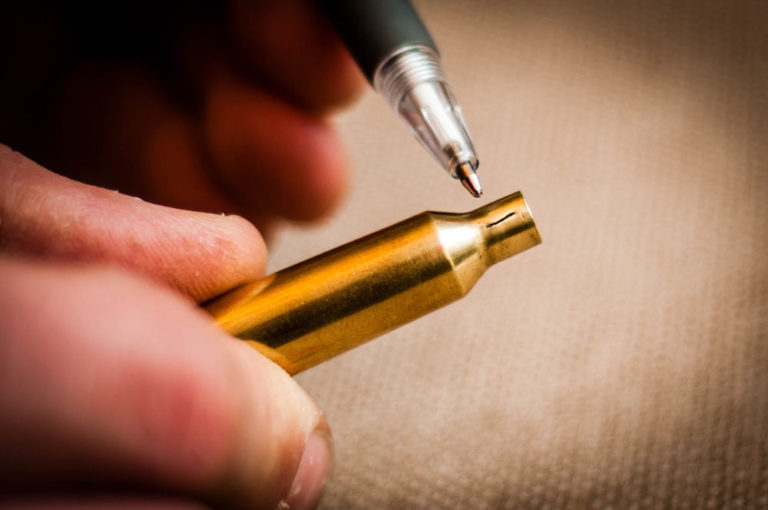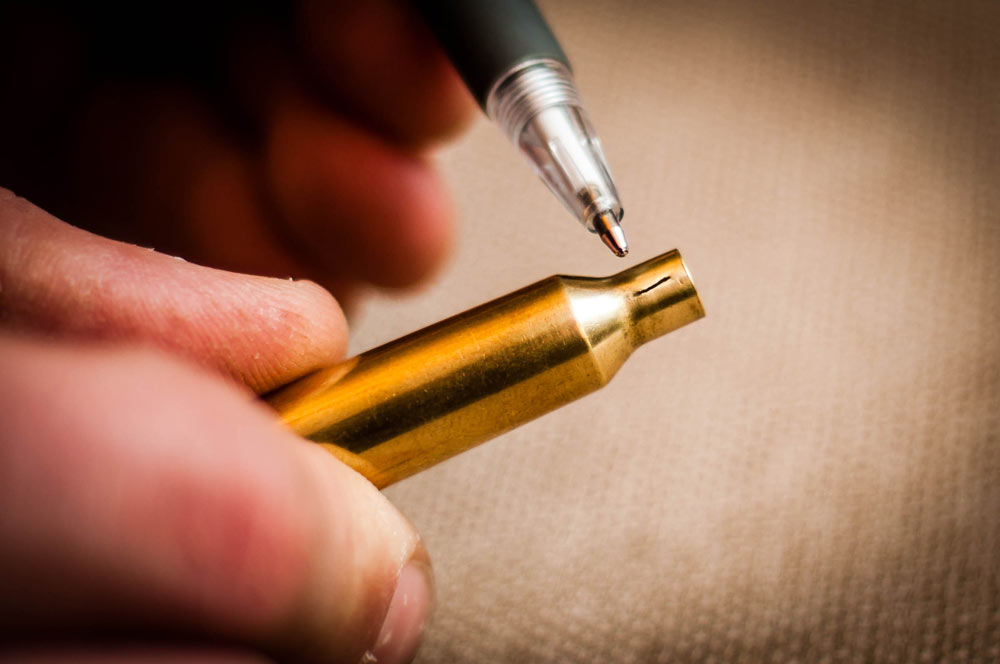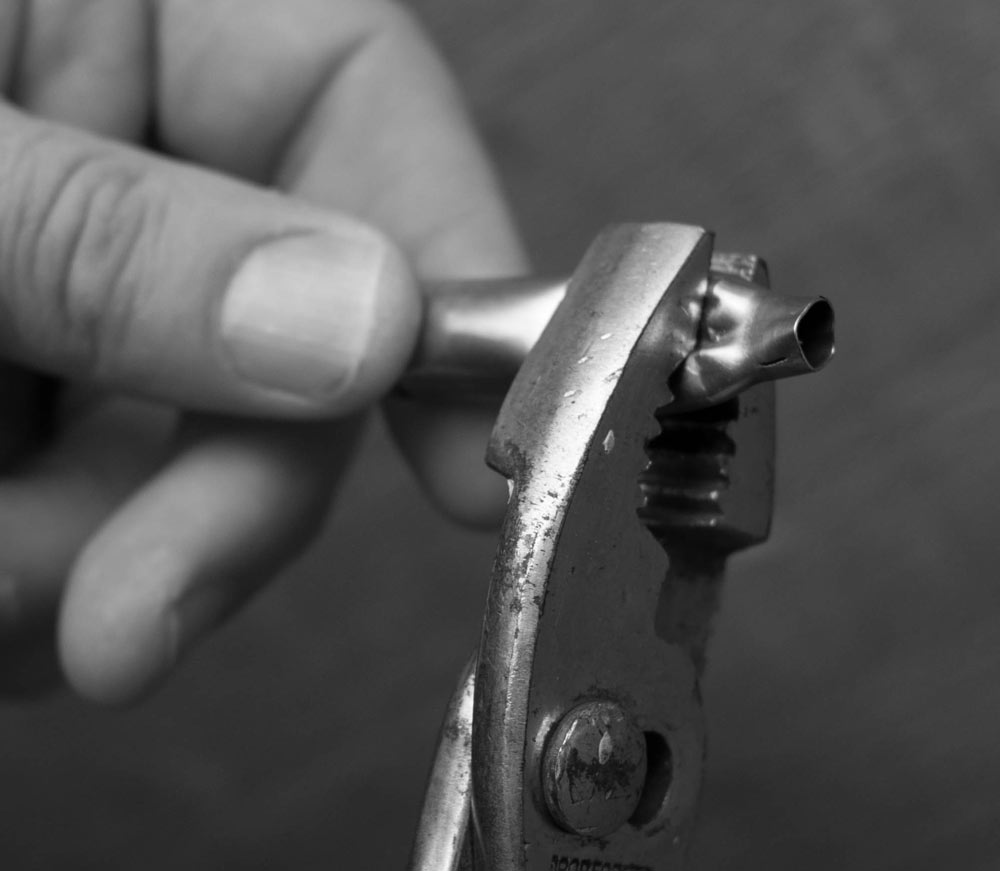

The brass case is the one component that is reusable in the reloading process. But eventually it will fail. Here is an explanation of the damages to look for and what to do when they're found.
The brass case is the only part of the cartridge that can be reused.
It is made of a material that is malleable; it can be reshaped to proper dimensions, and fired multiple times. But, like all good things in life, sooner or later the usefulness of that brass case will have reached the end.
Question is: How will you know?
There are several tell-tale signs, some are easily identified, and others take a bit more investigation. Here’s the skinny: you absolutely do not want a brass case to fail upon firing. It can be detrimental to your firearm, not to mention your health.
Brass becomes brittle as it is worked and reworked. In a bottle necked cartridge, the case mouth and shoulder gets most of the action inside the resizing die. Usually you will find that when a cartridge has become too brittle to withstand that reworking, it will develop a hairline crack in the case mouth, either at the edge of the case mouth, or just below it.
Cases with a split in the neck cannot be used any further, and should be immediately taken out of commission. The straight walled cases develop their splits at the case mouth, usually when they are sent up into the flaring die. This is the portion of the straight walled case that sees the most action.
Rigorous inspection of your cases, before, during and after loading, will ensure that things stay safe. I hold the cases up to a light source to check for splits, and do my best to keep a good record of how many firings a group of cases has seen.

In bottle necked cases, depending on the pressures and velocities, four or five firings is usually where I become overly suspicious and start to see split necks. Pistols and straight walled rifle cases generally tend to operate at lower velocities and pressures, so their useful life will tend to be a bit longer.
There is a process called annealing, where the case mouth and neck are heated and quenched, which will soften the brass to extend the life of your cases. You’ll often see a rainbow like color on quality brass that has been annealed; Hornady and Norma brass often come annealed from the factory.
There is another place you need to check for danger. The situation we are trying to avoid is referred to as case head separation.
I’ve told you that brass is malleable, and the brass in the case tends to ‘flow’ forward, toward the case mouth, upon repeated firing. The area of the case body about 1/3rd up from the rim tends to become thin as the brass flows forward.
What can happen is terrible: the brass case can actually rip in half in the chamber or the firearm. This can be deadly.
Pressures freak out, receivers can be destroyed, and the shooter can be injured or even worse, killed. I’ve seen case head separation happen quickly when the wrong ammunition is used; say firing a .270 Winchester in a .280 Remington chamber. It can also happen in a chamber that has excessive headspace, as the cases stretch quite a bit due to an oversized chamber dimension.
Here’s how you can check for this problem, and avoid disaster.

First step is to keep your eyes open for a very shiny ring in the area I’ve described. As the brass thins in this area, it makes the brass shine brighter than the rest of the case.
The second method is very, very high-tech. I use a straightened paper clip, with the last ¼” bent at right angles as a “feeler”, and if the brass is thin you’ll feel the case wall change as the brass gets thin. Ok, not so high-tech, but effective. Perhaps there’s a market for matte black “tactical ballistic paper clips”, I might have to get on that…
When I find a case that has seen the end of its days, I crush the mouth closed with a pair of pliers, so that there is no chance of having that case find its way back to active duty, and then discard the case in the recycle bin.
Check your brass, and check them well, and you'll enjoy a lifetime of safe reloading.

Next Step: Get your FREE Printable Target Pack
Enhance your shooting precision with our 62 MOA Targets, perfect for rifles and handguns. Crafted in collaboration with Storm Tactical for accuracy and versatility.
Subscribe to the Gun Digest email newsletter and get your downloadable target pack sent straight to your inbox. Stay updated with the latest firearms info in the industry.

![Best Concealed Carry Guns In 2025 [Field Tested] Wilson Combat EDC X9S 1](https://gundigest.com/wp-content/uploads/Wilson-Combat-EDC-X9S-1-324x160.jpg)


![Best 9mm Carbine: Affordable PCCs [Tested] Ruger Carbine Shooting](https://gundigest.com/wp-content/uploads/Ruger-Carbine-Shooting-100x70.jpg)
![Best AR-15: Top Options Available Today [Field Tested] Harrington and Richardson PSA XM177E2 feature](https://gundigest.com/wp-content/uploads/Harrington-and-Richardson-PSA-XM177E2-feature-100x70.jpg)

Thank you for explaining that the process called annealing will be able to soften the brass to extend the life of your cases. My friend will surely be interested to hear about it since he’s been into shooting lately. He is even looking at buying a quality rifle brass for reloading.
https://precisionbrass.net/product-category/rifle-casing/